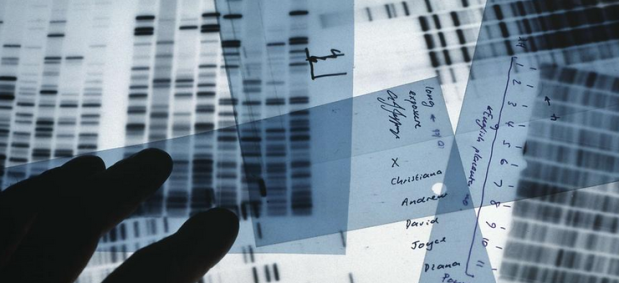DNA fingerprinting, the process of producing a unique ‘fingerprint’ from a DNA sample, is something of a staple in forensic science. The ability to link a suspect to a crime scene or identify a set of remains has revolutionised legal investigations, being utilised in countless legal cases across the world since its discovery in 1984.
But once upon a time this renowned technique was just emerging, with its creator, geneticist Sir Alec Jeffreys of the University of Leicester, still unaware of just how beneficial his new technique would be to the criminal justice system. But how did this somewhat stumbled upon discovery end up becoming one of the most reliable forensic techniques available?
The story begins in late November 1983. 15-year-old Lynda Mann set off from her home in a small Leicestershire village to visit a friend, but unusually did not return. The following morning her raped and strangled body was found on a quiet footpath. Little evidence could be found other than a semen sample retrieved from her remains, though even this proved to be ineffective in leading investigators in the right direction.
But this would not be the last the world would hear of Lynda Mann. Just a few years after Lynda’s murder, another young girl went missing in July 1986. 15-year-old Dawn Ashworth had been walking home when she disappeared, her family’s worst fears soon confirmed when her brutally raped and strangled body was found two days later in the woods. Once again, a semen sample was found on the victim. The similarities between the two murders were not overlooked and, with a fresh influx of interest and evidence, the investigation could progress, with police believing the same man could be responsible for both crimes. Suspicion soon fell on Richard Burkland, a 17-year-old local who appeared to have suspicious knowledge of the latest incident. Under questioning he admitted to murdering one of the victims. Job done, the police might have thought.

Source: http://www.sciencemuseum.org.uk
Meanwhile at the University of Leicester Sir Alec Jeffreys and his team were working on a novel DNA fingerprinting technique. The technique had already been utilised in an immigration case involving a boy from Ghana, successfully proving that he was in fact the son of a family living in the UK. Recognising the potential power of this procedure and keen to apply it to a criminal case, investigators pulled Jeffreys’ and his new technique into the case.
Contrary to the belief of police, DNA profiling actually proved that Richard Burkland’s DNA did not match the semen found at the two crime scenes, pushing the investigation back to square one. Although this in itself was a ground-breaking scenario, the first ever exoneration of an innocent man using DNA fingerprinting, the murderer was still at large and the police had no more leads to follow.
With no other options, on 1st January 1987 Leicestershire Constabulary announced that they would be joining forces with the Forensic Science Service to conduct a huge DNA profiling project, collecting DNA samples from over 4000 local men in order to rule them out as suspects. However six months down the line a match had not been found. Were their efforts all for nothing?
Fortunately, a lucky break came from a particularly interesting conversation overheard in a local pub. Ian Kelly, an employee at a nearby bakery, was caught bragging about being paid £200 to submit a DNA sample on behalf of a work colleague. Living too far away from the area to have been required to give a sample himself, Kelly had apparently agreed to this request without many questions. Unsettled by the conversation, another employee soon raised the alarm, and Kelly was detained and questioned.

Source: http://www.express.co.uk
Kelly was covering for Colin Pitchfork, a local baker. Pitchfork had convinced Kelly that he would be framed for murder if his own blood sample was submitted, a story which was evidently enough to persuade Kelly to oblige.
On 19th September 1987, Pitchfork was arrested. After the new DNA profiling technique matched his DNA fingerprint to the crime scene samples, he admitted to raping and killing the two girls. Experts calculated the probability of this match occurring by chance to be 5.8 x 10-8. Pitchfork was sentenced to life imprisonment on 23rd January 1988.
Moral of this story – if you think you’ve gotten away with murder, you had better hope your mates don’t chat about it at the pub.
References
Bodmer, W. F. et al. 1994. The Book of Man: The Human Genome and Our Quest to Discover our Genetic Heritage. Oxford: Oxford University Press.
R v Pitchfork 2009
Featured Image: DNA Testing. [online] Available: http://upoa.biz/dna-testing

